This is the principle of negative reinforcement. I think what we need to recognize, is that when we train horses, we are duty bound to perform negative reinforcement correctly because we have a bridle on the horse’s head and we have our legs wrapped around the horse, by the nature of the gear we use, and how we sit on the horse, inevitably we are going to use negative reinforcement.
Traditionally the way we train animals at liberty like polar bears, dogs or dolphins uses positive reinforcement. We can train horses by positive reinforcement, there is no doubt about that, but we must make our negative reinforcement clear because we are going to be using the reins, we are going to be using our legs on the horse, therefore we must get the pressures right.
When we get the pressures wrong, the horse is reinforced for the wrong behaviour. We easily make mistakes – we can apply pressure on the horse’s body and maintain it, even when he has given the right response, we can release the pressure on the wrong response, which is also the wrong thing to do. Or we can intermittently release the pressure, sometimes for good things, and other times for not the right things. Then we can really confuse the poor horse. We have to be careful whenever we use pressure to use it exactly when we want to use it.
Charlotte releases the pressure when she gets the result…
We can habituate the horse to stronger pressures in the jaw so that the horse carries more weight in his mouth, but the problem with that is that not all horses can handle that. We are breeding horses in the performance horse industry that are tolerant to pressures, but there is a fair amount of evidence that some of the horses that do show tolerance to pressures, pay the consequences in their behaviour at some other point. That is my concern because a lot of trainers don’t recognize, when the horse for example, weaves in the box, it bites or doesn’t stand still, yet nonetheless it seems to still go quite well under saddle – they are paying the price elsewhere.
The idea is that all animals have evolved a network of nerves in their head, of pathways that allow them to deal with all the challenges that their environment throws at them. This is in their native environment, because after all we have only domesticated horses in the last 6000 years. It’s not an old animal in terms of domestication, so the number of generations is really not huge. We have made distinct differences in their morphology, much taller and much smaller horses than were ever seen in the wild and very different colours and types. The thing we haven’t changed much – if at all – is the way they learn things.
Horses in the wild, or even in the domestic situation, can deal with signals from their environment and react to them appropriately. For example in the social setting if one horse puts its ears back and rushes towards another – the other rapidly learns a manoeuvre to prevent its being attacked. The hierarchy remains the same. It may change and then it stabilizes, but it doesn’t fluctuate. There are very few fluctuating stimuli in the environment that the horse is used to. Even in the paddock, the fence doesn’t move, the horse learns where the fence is, and although he might not be happy to be confined he learns that is the boundary.
The changeable things the horse has to deal with that are difficult, are the things humans do to him. It is about human interactions. If the horse can’t read our pressures, when we squeeze him to go forward but he gives the wrong reaction and we release our legs – maybe by mistake, or we don’t release our leg and we keep kicking and spurring him every stride, the price for that is paid in conflict behaviour further down the track.
For example with shying, you can’t quite often see a reason for the behaviour, and quite often there isn’t a reason in the environment. It is basically that the horse has had a bit of a short-circuit, and that is what he would do in his environment, run away. When the horse is restrained by the hand and leg, then he is basically trapped in the middle he cannot run away so his flight response boils into another type of expression. It can be the expression of running, rearing, or bucking, bolting or shying. Any of those tension things.
This is why horsemen centuries ago, recognized that a hollow shape was not a good shape to train. Once we get some levels of adrenalin in the horse’s body, once we have that level of the flight response, he is more difficult to train because he is less receptive to learn, he is more motivated to run.
Conflict behaviour is very much about what we do to the horse. Even when the horse is away from humans, when he is pacing up and down the paddock, digging holes by the feed bin, it is very likely to have some connection with the way the horse responds to our pressures in hand and the way he responds to pressures under saddle. It may be that a lot of erratic behaviour is going on, where he is not under the control of simple light signals, and that is really our aim in horse training.
We should work on making the horse’s environment predictable and controllable from his point of view by giving him signals that he can read. Because he can’t reason he can’t analyse his way out of the kind of training mess we put him in. It is only us by releasing pressures correctly that we can do that.
Going back to that first principle, the principles of negative reinforcement are that when we apply pressure it is important that the pressure increases, until the horse gives the right response, then it is removed immediately at the onset of the behaviour we are training. Any gaps in the pressure will mean that the horse is being rewarded for possibly the wrong behaviour. That is the structure of how negative reinforcement works. The pressure need not escalate to very high levels. Clear training is very rapid, and usually in a young horse takes only five repetitions to get the horse onto a light signal.
This article was originally published in the August 2004 edition of The Horse Magazine.
Breeding your new performance star in Australia this season? Dressage horse, show jumper or eventer? For a great selection of top European stallions, go to: www.ihb.com.au
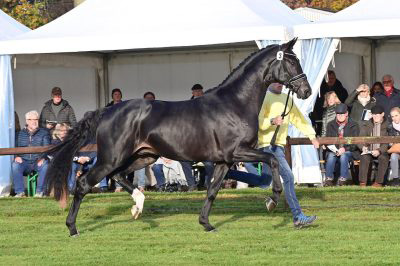
Bonhoffer
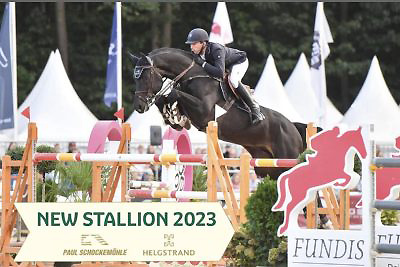
Chad Blue PS




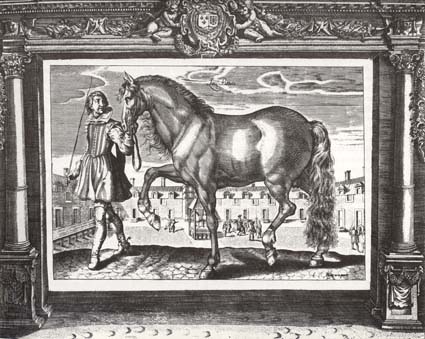
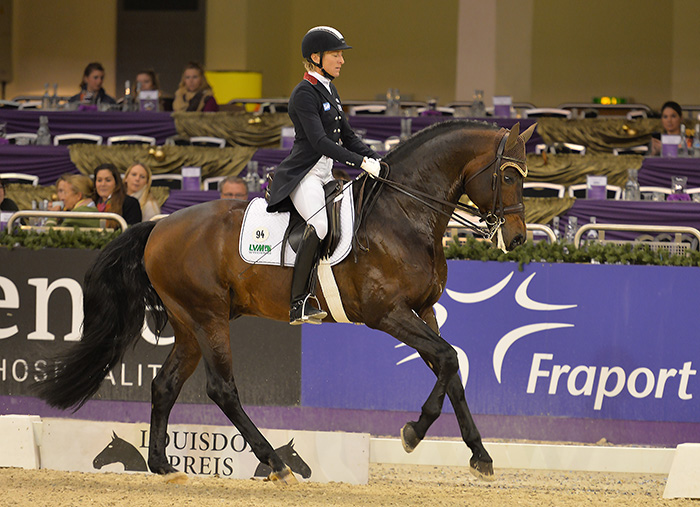
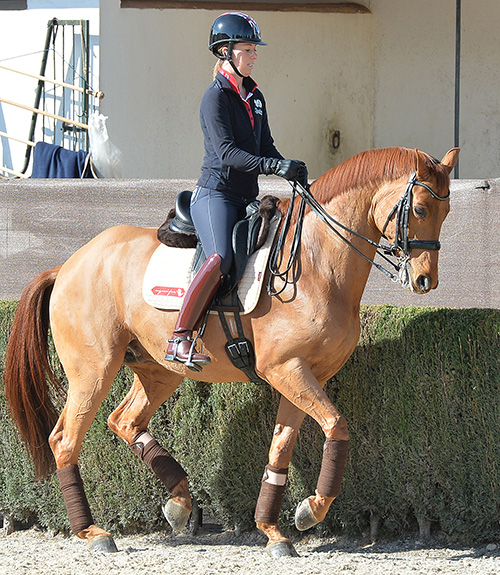
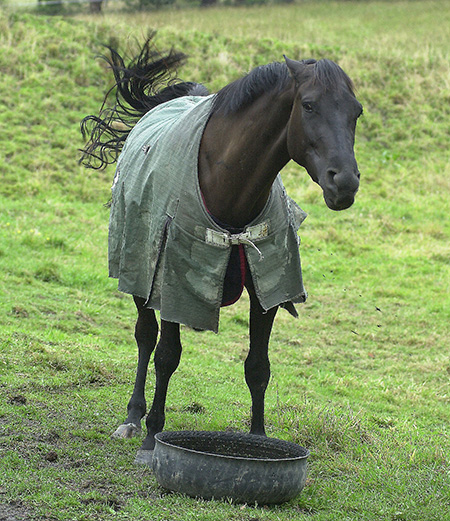
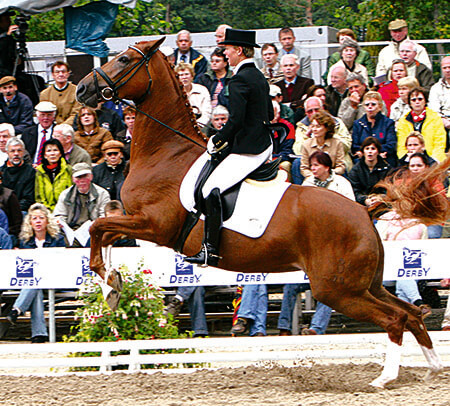
Wonderful article ! I have had the pleasure of working with Ali Wakelin in the UK this Spring and again this summer. She has been a student of you and your wife and son for many years. After her wonderful instruction I am better trained in your operants and much better in my understanding of pressure and correct release. All the horses I ride are happier, and without conflict. I am a RWYM coach in California and it saddens me that most trainers here put horses into learned helplessness and conflict. I will try in my small way to teach the operant conditioning to as many riders that I can for the well being of the horses. I also am very strict that their rider biomechanics is spot on so their pressures and releases can work well. Thank You so much for your wonderful work. Erica Poseley .
It is thanks to people like Andrew and Sara Ussher here in the UK that horses and ponies lives are changed for the better. Why won’t those who say they love horses even attempt to listen….fear of change, lazy, arrogant are only the start!